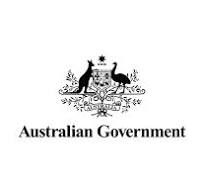What Treaties Are Canada, Australia & New Zealand Legally Bound By?
- agentorangechild
- Apr 19
- 2 min read
Each of these countries has signed international human rights treaties that legally require them to protect people from harm—especially children and people with disabilities. These same treaties give you the right to speak up, seek justice, and demand recognition.
Here’s how they apply to second-generation harm from Agent Orange (TCDD):
1. Convention on the Rights of the Child (CRC)
All three governments promised to protect children’s health, especially from environmental dangers.
They also promised to support children with disabilities and help them thrive.
But they never:
Monitored children of Vietnam veterans
Studied health risks from wartime toxins
Gave support or recognition to those born with conditions linked to TCDD
That’s a breach of their duty under the CRC.
Every child has the right to health, justice, and protection from preventable harm—even harm passed from a parent’s military service.
2. Convention on the Rights of Persons with Disabilities (CRPD)
This treaty says disability isn’t just about health—it’s also about how society responds.
If the government ignores toxic exposure and fails to support affected people, it’s creating barriers.
That means:
If your disability was caused or made worse by chemical exposure
And the state failed to act…
That’s a human rights violation under CRPD.
They must acknowledge preventable causes of disability, investigate harm, and provide access to justice.
3. International Covenant on Economic, Social and Cultural Rights (ICESCR)
This treaty says everyone has the right to:
The highest attainable standard of health
Social protection if they’re harmed or unable to work
An environment that doesn’t damage your health
If you were harmed by TCDD before you were born—and your government refused to recognize that harm or offer help—they’ve broken this promise.
“We won’t help you because there’s no official proof” isn’t good enough under international law.
4. Convention on the Elimination of All Forms of Discrimination Against Women (CEDAW)
This treaty protects the reproductive rights and health of women—including the right to safe pregnancies and support for women affected by toxins or birth complications.
It also applies to women living with long-term reproductive, endocrine, and neurological issues passed through dioxin exposure.
Failing to study, support, or recognize these impacts is gender-based health discrimination.
5. The Stockholm Convention on Persistent Organic Pollutants
This global treaty is about dangerous chemicals like TCDD.
It requires countries to:
Stop using and producing toxic substances
Prevent exposure from legacy contamination
Recognize long-term environmental harm
TCDD (Agent Orange) is one of the most dangerous chemicals ever studied.
It doesn’t break down. It stays in the environment and in the human body for decades.
If a government knows this, and still refuses to monitor or respond to long-term effects, that’s a violation of this treaty.
In Plain Terms:
These governments are not just ignoring you—they’re ignoring the legal promises they made to the entire world.
You have rights under:
The rights of children
The rights of disabled people
The right to health
The right to justice
The right to live free from toxic harm

These aren’t optional. They are binding commitments that all three countries have agreed to uphold—and that you can hold them accountable



Comments